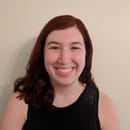The second installment in J.K. Rowling’s Fantastic Beasts franchise, “Crimes of Grindelwald” opened November 16th. It was the lowest opening of any film in the Harry Potter universe, with considerable baggage attached to the project. Critics, in general, reacted poorly to the film, owing its largest weaknesses to the film’s burdened script and abundance of subplots. Non-fans of the Harry Potter franchise–or at least people who haven’t read the books–will appreciate the gorgeous CGI and updated wizard fight scenes. If you left “Fantastic Beasts and Where to Find Them” (2016) wishing for more exposition on magical cities across the world, then you will be delighted by the scenes of magical life in Paris, where the film’s CGI really shines. More cute magical creatures are included in the film, as well as returning favorites such as the baby nifflers, who are perhaps the one thing fans can agree on: they were incredibly cute. New magical techniques and spells are shown, which were added perhaps only because the CGI of 2018 can capture Rowling’s vision.
Fans of the Harry Potter books have found several inconsistencies in the new film. Rowling forgets her own timeline and laws of her universe. Without spoiling any of the major reveals of the film, several twists were retroactively added by Rowling that disregard her earlier works. Rowling, who wrote the screenplays for the past two Fantastic Beasts films, is clearly tweaking her canon for financial gain. She adds moments of diversity throughout the film that may perplex longtime viewers for their fictional and nonfictional inconsistencies. If American wizards forbid magical and non magical unions, then why would they champion racial and gender diversity? Voldemort’s message in the Harry Potter novels was one of thinly veiled racism– ‘pureblood’ wizards were ultimately superior to ‘muggle-born’ wizards and regarded as a superior race. The Harry Potter series transpired in Britain in the 1990s. There were few non white wizards that went to school with Harry Potter—Dean Thomas, the Patil twins and Lavender Brown (but only until the movies turned her white)–were the exceptions. No LGBTQ characters were in the Harry Potter series. Albus Dumbledore was not canonically revealed to be gay until after the final Harry Potter book’s publication, drawing much ire from fans who had interacted with other human beings before and realized that gay people have always existed.
Despite the reality of a complex society of multiple races, religions, political ideologies, sexualities and gender identities, J.K. Rowling adds diversity in a self-congratulatory manner. Actors of different races are shown, which is ultimately beneficial for the franchise and reflects reality. The problem is not that Rowling adds diversity, but that she did so as an afterthought. Not even in “Crimes of Grindelwald” is Dumbledore and Grindelwald’s past relationship alluded to with anything other than the euphemisms for gay men found in the 1950s.
The script is weak. If you can ignore the glaring disparities in other films and books–say, like a normal movie-going person who did not go straight to Wikipedia after watching–then you cannot ignore the lurid twists at the end of the film which serve nothing more than to provide an impetus for Rowling writing the scripts for three more films in this bloated, unnecessary film series. Past characters are little improved upon and the new characters are flat and one-dimensional.
Do not waste the money on seeing “Crimes of Grindelwald” in the theaters. If you are still so inclined to watch it, wait until you can rent it at the comfort of your own home, take some Benadryl, and let the pretty CGI distract you from this boring, self-indulgent installation. Fans of the books might do as fans of Atticus Finch did when Go Set a Watchman was published: do not see the newest adaptation because it will ruin Atticus, or this place the Harry Potter universe, that you held onto so dearly.


